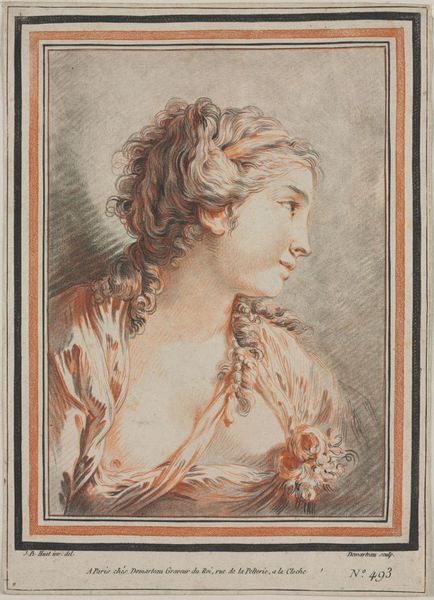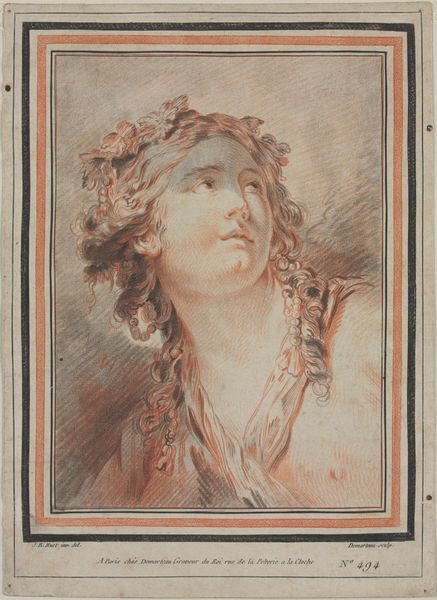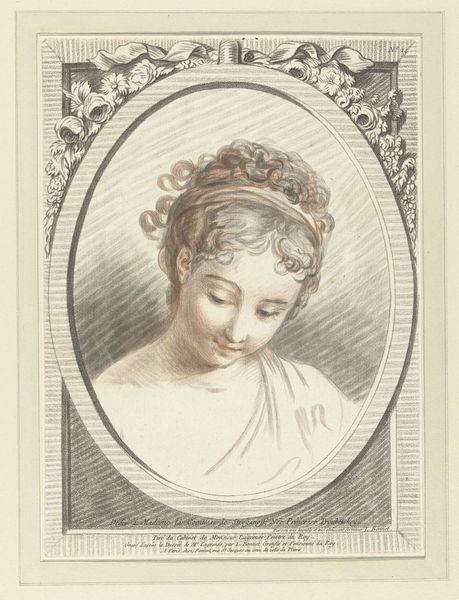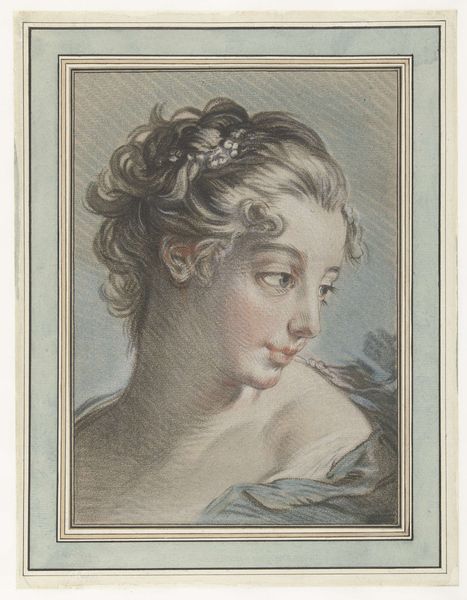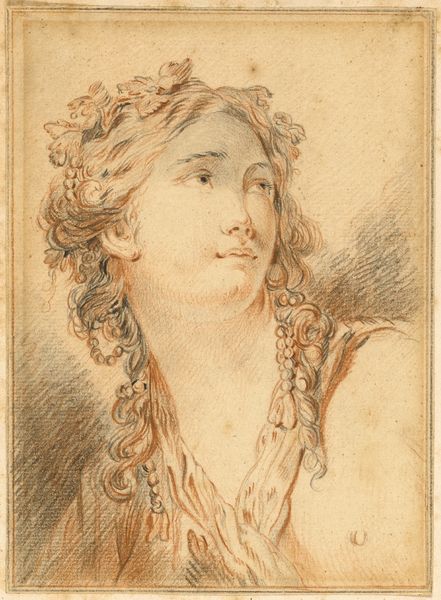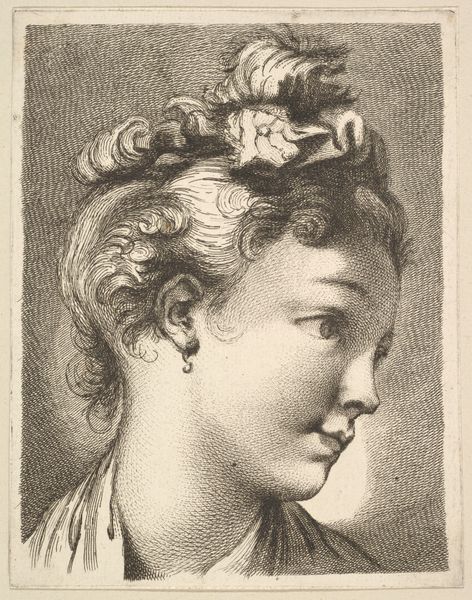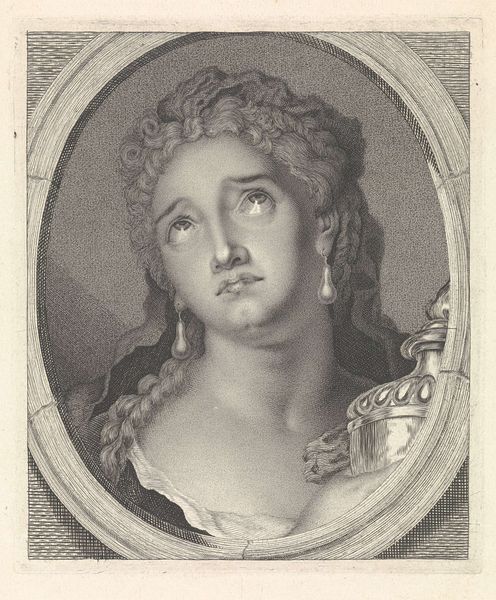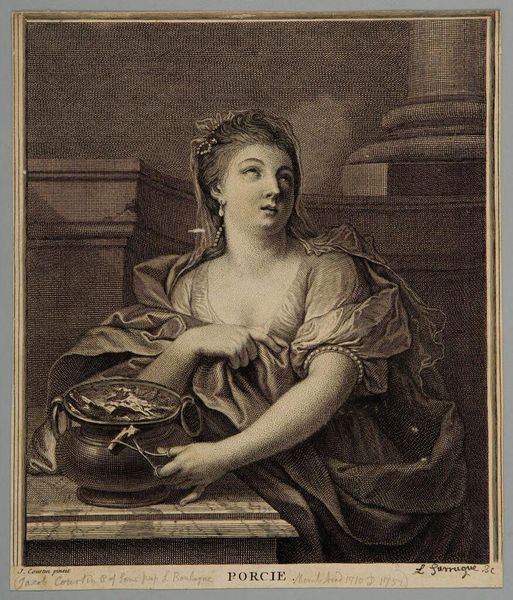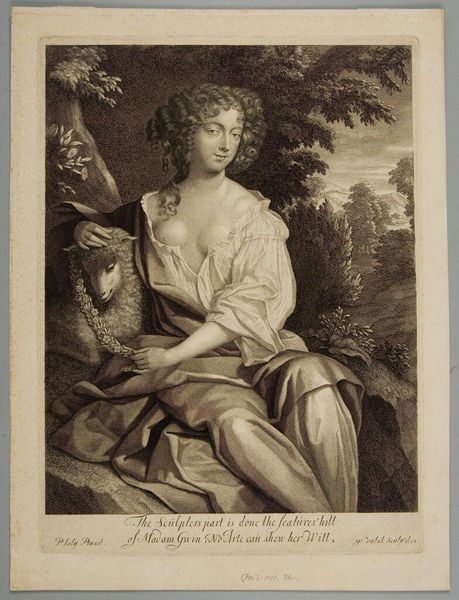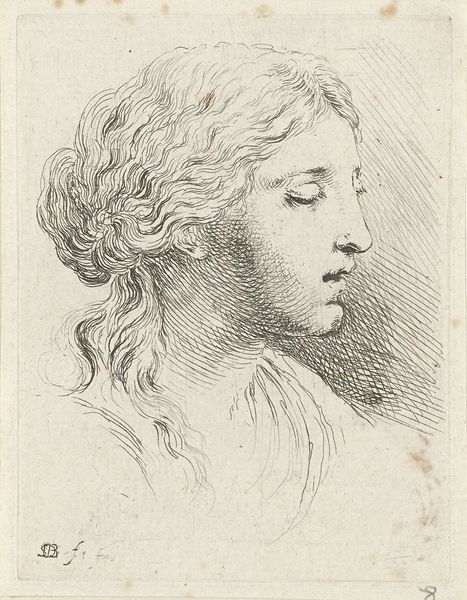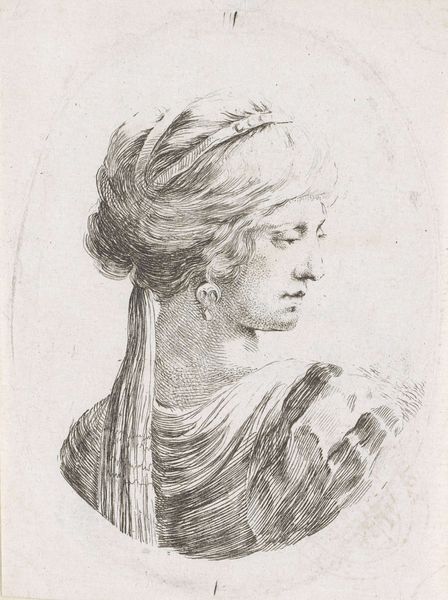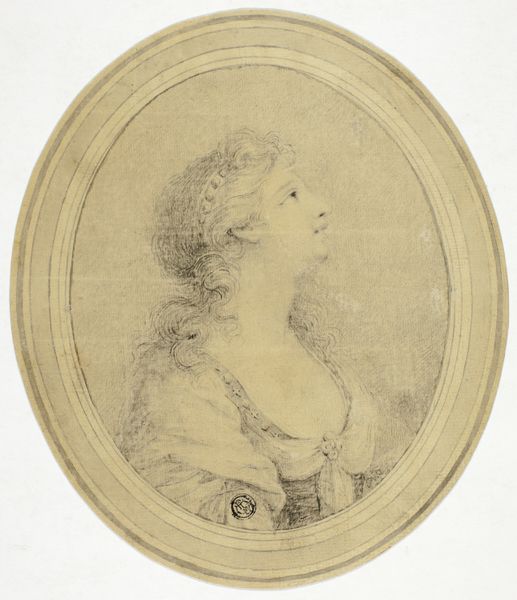
drawing, paper
#
portrait
#
drawing
#
figuration
#
paper
#
rococo
Dimensions: height 223 mm, width 169 mm
Copyright: Rijks Museum: Open Domain
Editor: So, this is "Buste van vrouw," a drawing on paper by Gilles Demarteau, created sometime between 1732 and 1776. The lines are so delicate, and the pose feels very considered, very graceful. What historical perspectives can you offer on this particular piece? Curator: This drawing encapsulates the Rococo fascination with elegance and aristocratic ideals. Notice the deliberate way the artist uses line to suggest both the delicacy of the subject and her elevated social status. How do you think this image functions within the broader context of portraiture at the time? Editor: Well, it seems less about capturing a true likeness and more about projecting a certain image, an ideal of beauty and refinement, almost like propaganda. Curator: Exactly! The piece engages in the political function of visual representation, presenting a polished image of the ruling class. The way she's depicted – the soft focus, the refined attire, even the rose – promotes an aesthetic of gentility. Consider the role such images played in reinforcing social hierarchies and power structures. Who would have been viewing these images and what message were they receiving? Editor: It's fascinating to think of this image actively shaping perceptions of the elite! Did artists at the time deliberately intend for these works to have a political impact? Curator: Absolutely. Artists worked within patronage systems, fulfilling the demands of powerful individuals and institutions. Their artistic choices – composition, style, symbolism – reflect the social and political agendas of their patrons. Even a seemingly innocuous portrait can serve as a carefully constructed statement about power, legitimacy, and taste. Editor: That's given me a completely new way to look at it. It's not just a pretty drawing; it's a piece of historical communication. Curator: Precisely. It reminds us that art rarely exists in a vacuum, but always speaks to—and actively shapes—its social context.
Comments
No comments
Be the first to comment and join the conversation on the ultimate creative platform.
